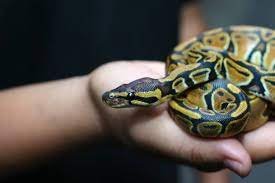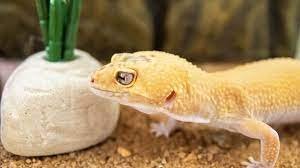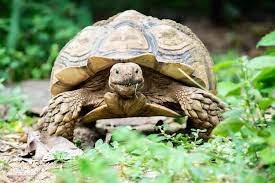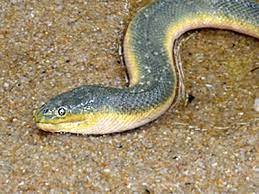The closest living relatives of dinosaurs are the crocodile and alligator. Their history goes back more than 70 million years. These ‘living fossils’ have not evolved much since then. Since they are both members of the same evolutionary group, alligators and crocodiles are often mistaken for one another. Both are enormous, lizard-like reptiles with thick scales, long tails, short legs, long beaks, and big jaws. Both reptiles look similar, yet they have distinguishing characteristics that allow you to tell them apart.
We’ve put up a comparison of the alligator and the crocodile to demonstrate their differences and similarities, their feeding habits, the danger they offer to humans, and the victor of a hypothetical fight between the two. Glaring down their menacing noses is the quickest and surest way to tell the two lizards apart. Crocodiles have narrow, almost V-shaped snouts while alligators have wider, shorter U-shaped noses. And if you’re feeling particularly bold, you may even peek at their teeth!
If you ever come across one of these reptiles again, you’ll be able to identify it from a safe distance.
1. Alligators and Crocodiles Have Different Snouts

Alligators’ longer, more pointed snout is a distinguishing feature from crocodiles’ shorter, blunter one. It’s easy to tell the difference between an alligator and a crocodile by their shapes: the former is wider and U-shaped, while the latter is longer and narrower and more V-shaped. While the crocodile’s snout is better adapted to hunting various food including fish, reptiles, and mammals, the alligator’s snout form is likely unique due to their diet and eating habits, in particular breaking apart turtle shells.
Also, know about Baby Peacocks
2. Alligators Are Dark Green Or Black

One of the most obvious distinctions between crocodiles and alligators is their respective colors. Crocodiles typically range in color from green and grey to brown and black. They can mix in with the algae and substrate thanks to their mottled or speckled appearance. The typical coloration of an American crocodile is a slate grey back and a white to yellow belly. The term “countershading” is used to describe the use of contrasting dark and light hues. It helps them hide in the ocean while they’re on the prowl.
3. Where Do Alligators and Crocodiles Live?

Only the southeastern United States and eastern China are home to alligators, although crocodiles can be found in Africa, Australia, Southeast Asia, North America, South America, and Central America.
More common than crocodiles in the United States is the alligator. Alligators are widespread across Florida and Louisiana, as well as in sections of Georgia, Alabama, Mississippi, North and South Carolina, Texas, Oklahoma, and Arkansas, whereas American crocodiles are only found in the very southern tip of Florida.
In the United States, alligators are far more common than crocodiles. Comparatively, there are less than 2,000 crocodiles yet over 3 million alligators. Crocodiles and alligators coexist together in the wild only in southern Florida.
4. Crocodiles Are Bigger Than Alligators

Crocodiles, in general, are much bigger than alligators. The largest of the crocodilian species is the saltwater variety, which can grow to be up to 23 feet in length. The average length of an American crocodile is 15 feet, however, they can grow to 20 feet in length. Between 800 to slightly over 1000 kilos, it is quite heavy.
Male alligators grow to a maximum size of 12–13 feet in length and up to a thousand pounds in weight. A female might be anywhere from 8 to 10 feet tall and 500 to 700 pounds. The American crocodile is often four to six feet longer than the normal alligator. However, judging an animal’s size based on a distant view might be challenging. For this reason, size is one of the hardest methods to identify each species.
5. What Do Alligators and Crocodiles Eat?

The diets of both the alligator and the crocodile include aquatic animals, reptiles, and mammals. They’re top-level predators that subsist almost entirely on the meat of other creatures. Although the ranges of the American alligator and American crocodile overlap just slightly, both species have plenty of food options available to them.
- Alligator
- Crocodile
- Fish
- Carrion
- Frogs
- Flamingos
- Turtles
- Bass
- Birds
- Wildebeest
- Sharks
- Tilapia
- Rays
- Goats
- Snakes
- Family pets
- Tadpoles
- Frogs
- Spiders
- Possums
- Worms
- Storks
- Bobcats
- Animals that live in the ocean
- Pigs that Run Wild
- Insects
- Deer
- Cattle
- Animals that live in Florida are called panthers
- Sharks
- Grizzly bears, or black bears,
- Crabs
6. Crocs Have A More Powerful Bite!

The teeth of crocodiles are pointed and sharp because they have to be effective at tearing. Crocs’ bite strength is roughly 3700 psi, which is incredibly high.
The jaw of an alligator is designed to smash rather than rip its prey. This is why rather than having pointed teeth, they have cone-shaped ones. The force of their bite is roughly equivalent to 2500 psi.
7. Habitat: Freshwater or Saltwater?

In order to rid themselves of excess salt, crocodiles use glands in their tongues. This implies they may remain at sea for several days, if not weeks, without difficulty. While alligators have these glands, they aren’t nearly as effective, which is why they prefer freshwater environments (a mixture of salt and freshwater).
8. Alligators Have Tiny Black Spots

Dome-shaped pressure sensors are found on the skin of crocodiles and alligators, respectively. They use these receptors to sense and control water pressure while swimming. The dome pressure receptors of an alligator can be seen as tiny black spots close to the jaw. The crocodile’s dome-shaped pressure receptors are diffusely located and transparent. Because of this, they are more adept at swimming in open water than alligators.
Also, crocodiles can osmoregulate in high salinity settings thanks to salt glands on their tongues. It is not true that alligators produce salt through their salivary glands.
9. Which Runs and Swims Faster: An Alligator or a Crocodile?

Both are capable of rapid movement over short distances on land. They both have the ability to “gallop” or “sprint,” but they only do it when they feel threatened and over very short distances. When running, a crocodile can achieve speeds of nearly 9 mph (14 kph), whereas an alligator can reach speeds of roughly 11 mph (18 kph).
While both crocodiles and alligators are formidable predators, the former is bolder than the latter. If an alligator detects that humans are approaching, it will likely try to flee to the nearest body of water. Wild alligators will only attack humans if they feel threatened, are startled, or are attempting to protect their young.
Although alligators naturally avoid human contact, they have been known to gradually overcome their irrational fears after prolonged socialization with people. Feeding them is usually a poor idea unless you’re keeping them in captivity, as it reduces their natural fear of humans and makes them view us as a potential food source. Small children and household pets may also be mistaken for prey.
Crocodiles, on the other hand, are significantly more bad-tempered and far more prone to attack humans, even unprovoked. Australian saltwater crocodiles are widely regarded as the most deadly in the world, followed by Nile crocodiles. However, American crocodiles are generally docile and will avoid confrontation with humans. Although crocodile attacks are much more common than alligator attacks, both are extremely rare in the United States.
Summary

Now that you have read this, you should be able to distinguish between an alligator and a crocodile. Bear in mind that alligators and crocodiles are two entirely different kinds of reptiles. The size, shape, and color of their jaws are distinctive features.
Alligators are smaller than crocodiles, can be either dark green or black, and have u-shaped snouts with tiny black dots. Crocodiles are more dangerous than alligators because they are larger, have more aggressive personalities, and have v-shaped snouts. They also have visible bottom teeth and are bright green, brown, or light grey. Alligators and crocodiles in the United States are more terrified of you than you are of them.





